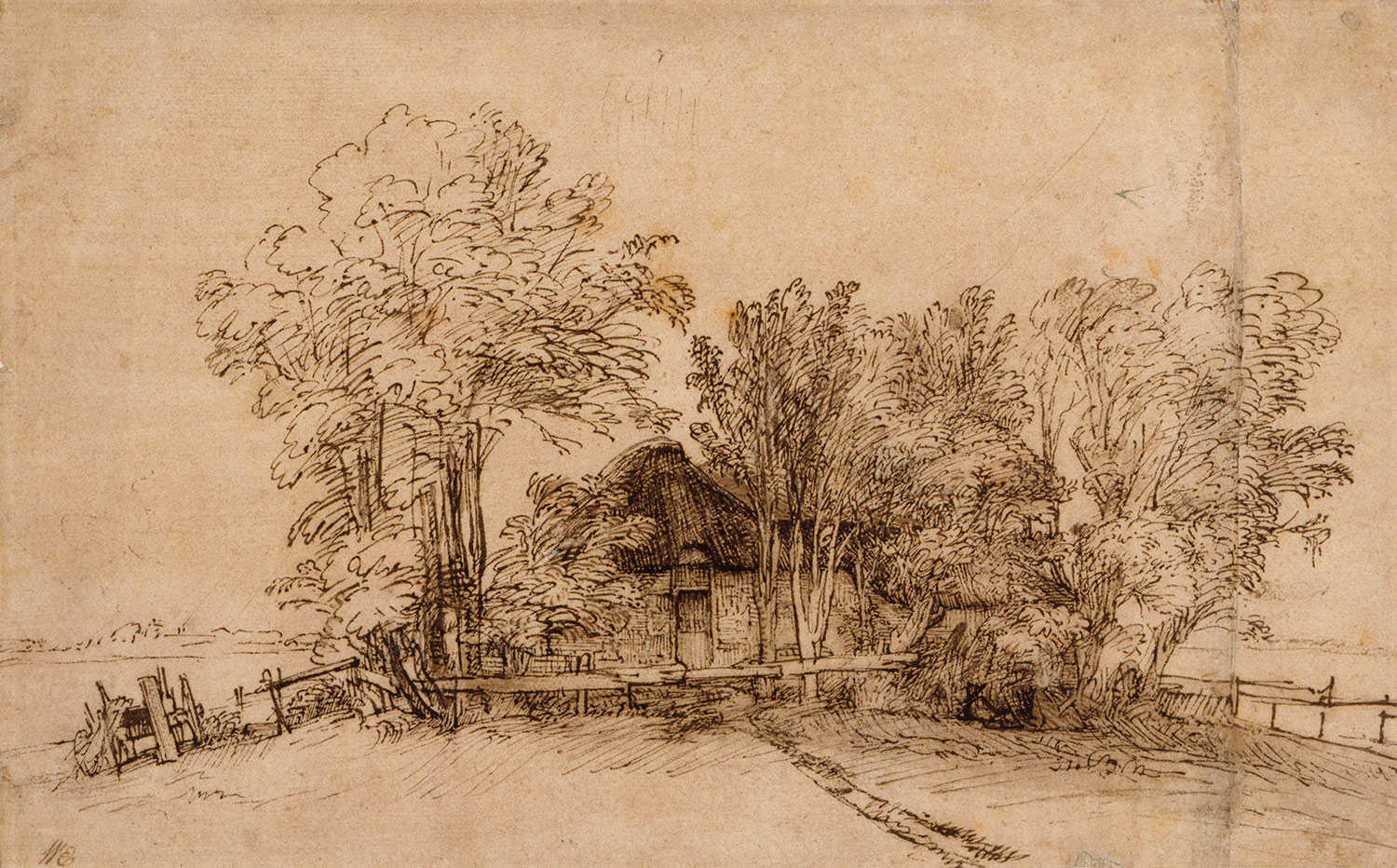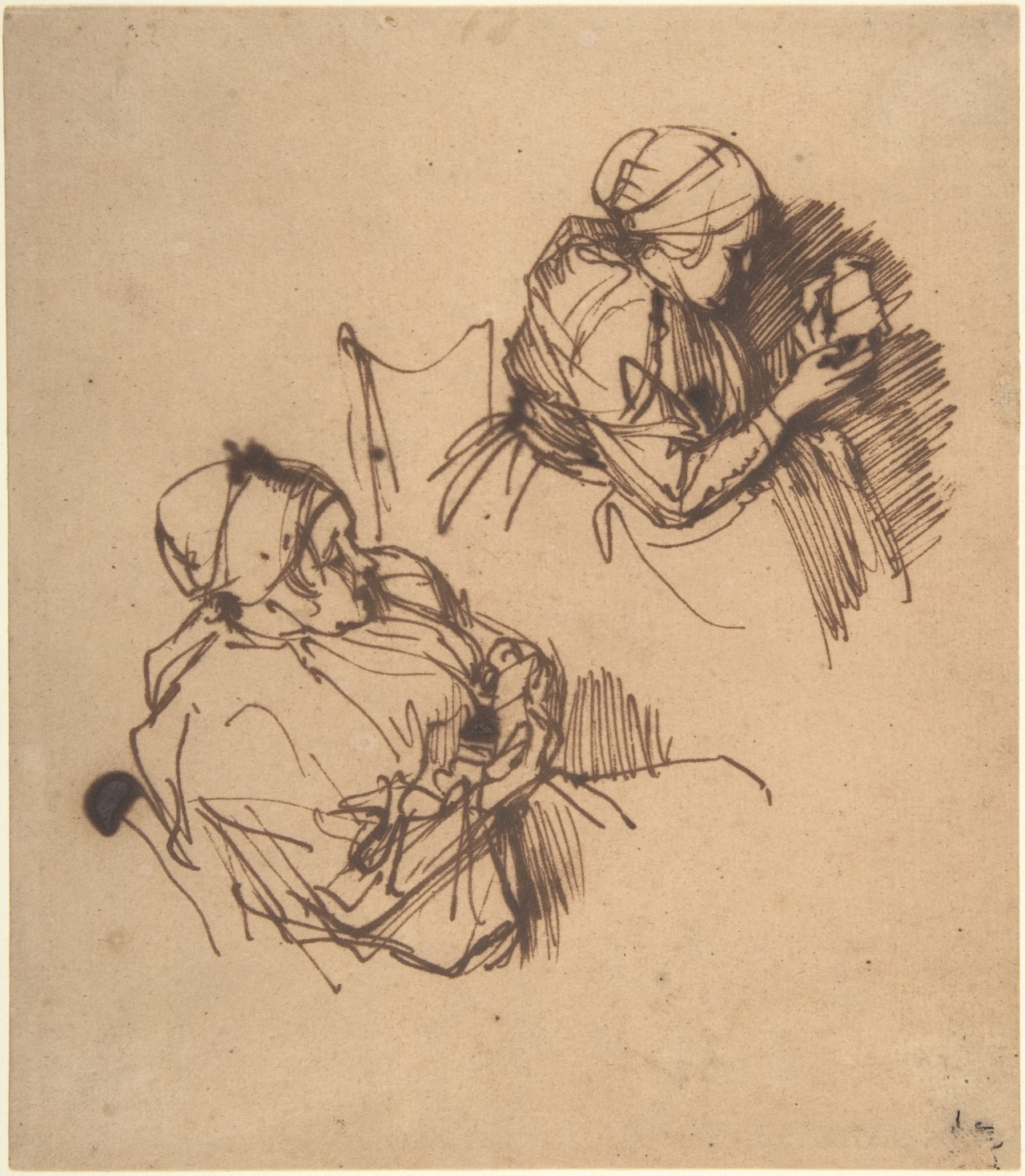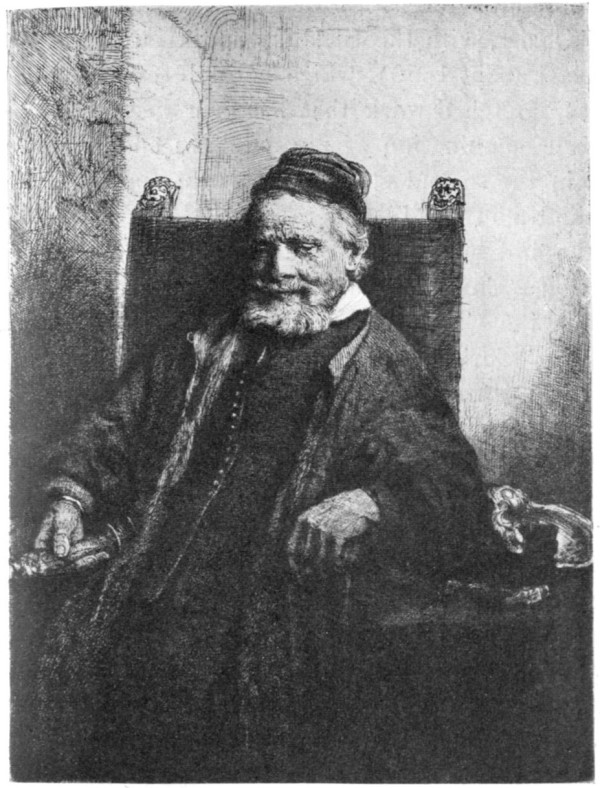The Metropolitan Museum of Art celebrated the 400th birthday of Rembrandt Harmensz van Rijn with the display July 11 - October 15, 2006 of a selection of 58 drawings and prints from its extensive collection of works by the great 17th-century Dutch master and artists of his school. Forty-four of the works on view were by Rembrandt himself.
Rembrandt's graphic works illustrate, perhaps even better than his paintings, the range of the artist's creative genius – his spontaneity, artistic inventiveness, and rethinking of traditional media. His subject matter ranges from the directly observed (landscapes, portraits, and sketches of people and animals from life) to the invented (most notably biblical scenes).
Rembrandt was fascinated with subjects from the Old and New Testaments, and in his portrayals of these subjects he revealed the realistic human emotion and narrative detail that these stories inspired.
Landscapes were another favored subject.

The Three Trees,
in which he evoked the typically blustery and rainy Dutch weather, is the most intensely dramatic of these works. He created many of his landscape drawings, like

Houses by the Water,
in nature, on his wanderings through in the countryside outside of Amsterdam. He made others like the classically composed

Cottages among Trees
once he had returned to his studio.
Rembrandt's drawings reveal the artist's keen powers of observation. He executed them with the utmost freedom and spontaneity, yet no line is extraneous – he invested each stroke with meaning, either representational or expressive. Among the outstanding drawings in the museum's collection are

Two Cottages, 1635-40,

Two Studies of a Woman Reading, 1635-40,

and Study Sheet with Three Women and a Boy, 1635-40.
Rembrandt was a bold and unconventional printmaker. He worked some etchings almost like paintings, combining techniques, leaving veils of ink on the copperplate, printing on varying supports, and radically reworking images from State to state. These were characteristics that few of his contemporaries or pupils ever approximated. Among the great Rembrandt prints in the collection are the introspective portrait of the goldsmith

Jan Lutma the Elder, 1656,
printed on golden-toned japan paper, that evokes the shifting play of light on the sitter.
By the 1650s, Rembrandt began to treat the printing plate much like a canvas, leaving some ink or tone on the surface of the printing plate in order to create "painted" impressions of prints in which each impression would look different depending on the way he had inked the plate.
_-_WGA19086.jpg)
The Three Crosses
is Rembrandt's great masterpiece of this period. The Museum's impression, once thought to be the second state but now considered an impression of the first, was printed on vellum, a surface that brings a warm overall tone to the image and emphasizes the richness of the ink that the artist left on the surface of the plate and the velvety burr created by his drypoint lines. Rembrandt completely reworked The Three Crosses in the fourth state of the print. Here he completely transformed the copperplate of The Three Crosses by scraping away large portions of the original composition, some of which are still visible underneath the hatching.
Rembrandt had many pupils. Many of them followed his style closely, more so in drawings – which appears to have been in certain ways a much more personal medium for the artist – than in prints.
Among the remarkable sheets by known pupils is

Ferdinand Bol's commanding David Showing Saul the Tip of His Coat, 1636-41.
Other skillful drawings defy attribution, like the charming

Studies of Two Men and a Woman Teaching a Child to Walk, 1645-50.
The exhibition was organized by Nadine M. Orenstein, Curator, and Rachel Stern, Research Assistant, both of the Metropolitan Museum's Department of Drawings and Prints.